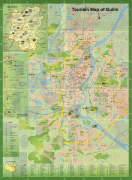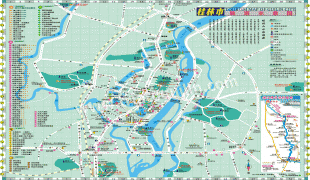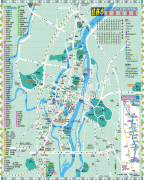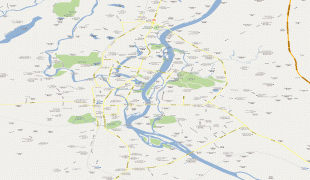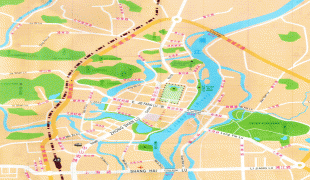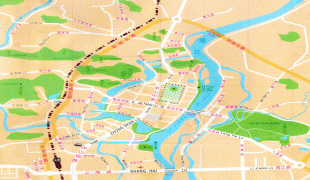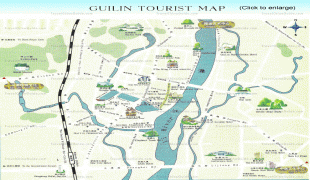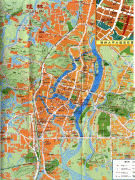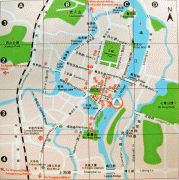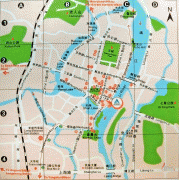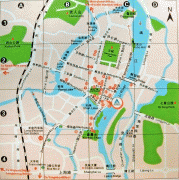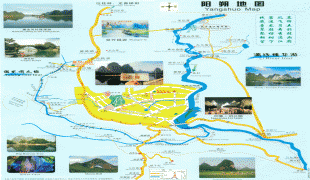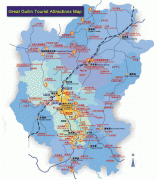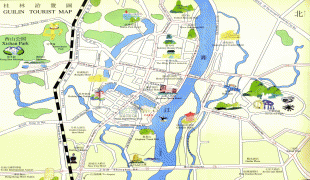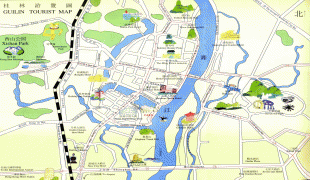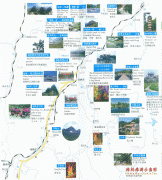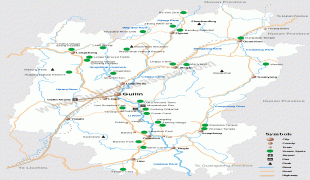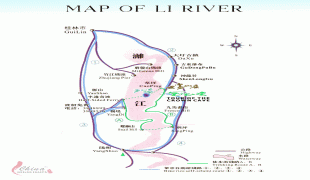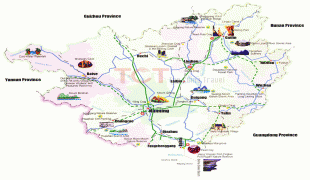Guilin
Guilin is one of China's most popular tourist destinations, and the epithet "By water, by mountains, most lovely, Guilin" is often associated with the city. The State Council of China has designated Guilin a National Famous Historical and Cultural City, doing so in the first edition of the list.
Before the Qin dynasty, Guilin region was settled by the Baiyue people. In 314 BC, a small settlement was established along the banks of the Li River.
During the Qin dynasty's (221–206 BC) campaigns against the state of Nanyue, the first administration was set up in the area around Guilin. The modern city was located within the Guilin Commandery, which is origin of the modern name "Guilin".
In 111 BC, during the reign of Emperor Wu of the Han dynasty, Shi'an County was established, which could be regarded as the beginning of the city.
In AD 507, the town was renamed Guizhou (Gui Prefecture, ).
In 634, Lingui County was established at the modern site of Guilin, under Gui Prefecture. In 868, Pang Xun rebelled against the Tang from Gui Prefecture.
Guilin prospered in the Tang and Song dynasties but remained a county. The city was also a nexus between the central government and the southwest border, and it was where regular armies were placed to guard that border. Canals were built through the city so that food supplies could be directly transported from the food-productive Yangtze plain to the farthest southwestern point of the empire.
In 997, Guangnan West Circuit, predecessor of modern Guangxi, was established, with Guizhou as the capital. In 1133, Guizhou was renamed Jingjiang Prefecture. In 1367, the name was changed to Guilin Prefecture.
In 1921, Guilin became one of the headquarters of the Northern Expeditionary Army led by Sun Yat-sen. In 1940, Guilin City was established. Guilin was the provincial capital of Guangxi before 1912 and from 1936 to 1949.
Map - Guilin
Map
Country - China
 |
 |
| Flag of China | |
Modern Chinese trace their origins to a cradle of civilization in the fertile basin of the Yellow River in the North China Plain. The semi-legendary Xia dynasty in the 21st century BCE and the well-attested Shang and Zhou dynasties developed a bureaucratic political system to serve hereditary monarchies, or dynasties. Chinese writing, Chinese classic literature, and the Hundred Schools of Thought emerged during this period and influenced China and its neighbors for centuries to come. In the third century BCE, Qin's wars of unification created the first Chinese empire, the short-lived Qin dynasty. The Qin was followed by the more stable Han dynasty (206 BCE–220 CE), which established a model for nearly two millennia in which the Chinese empire was one of the world's foremost economic powers. The empire expanded, fractured, and reunified; was conquered and reestablished; absorbed foreign religions and ideas; and made world-leading scientific advances, such as the Four Great Inventions: gunpowder, paper, the compass, and printing. After centuries of disunity following the fall of the Han, the Sui (581–618) and Tang (618–907) dynasties reunified the empire. The multi-ethnic Tang welcomed foreign trade and culture that came over the Silk Road and adapted Buddhism to Chinese needs. The early modern Song dynasty (960–1279) became increasingly urban and commercial. The civilian scholar-officials or literati used the examination system and the doctrines of Neo-Confucianism to replace the military aristocrats of earlier dynasties. The Mongol invasion established the Yuan dynasty in 1279, but the Ming dynasty (1368–1644) re-established Han Chinese control. The Manchu-led Qing dynasty nearly doubled the empire's territory and established a multi-ethnic state that was the basis of the modern Chinese nation, but suffered heavy losses to foreign imperialism in the 19th century.
Currency / Language
| ISO | Currency | Symbol | Significant figures |
|---|---|---|---|
| CNY | Renminbi | ¥ or 元 | 2 |
| ISO | Language |
|---|---|
| ZH | Chinese language |
| UG | Uighur language |
| ZA | Zhuang language |






